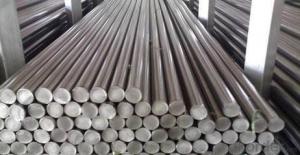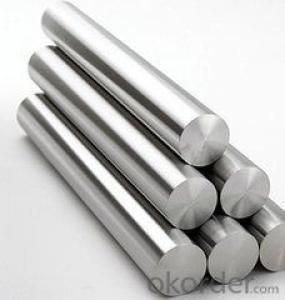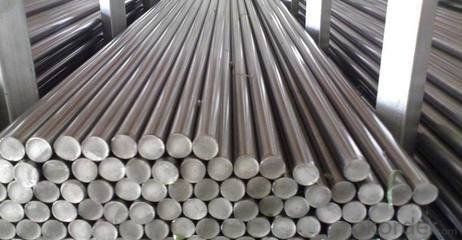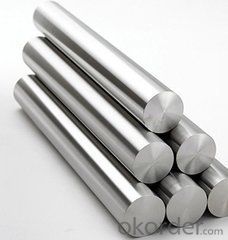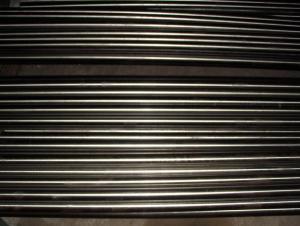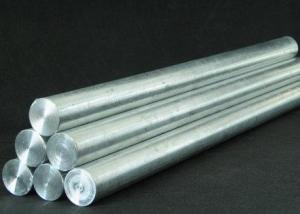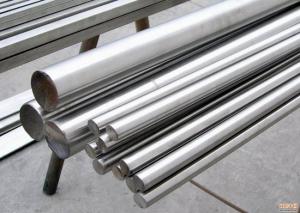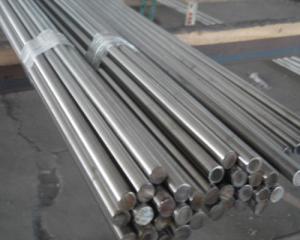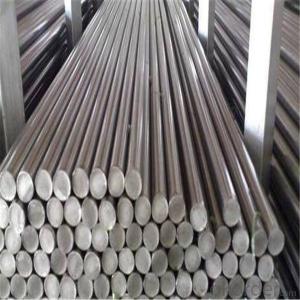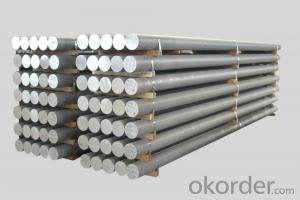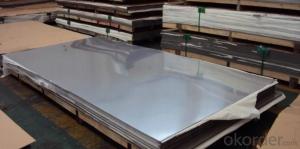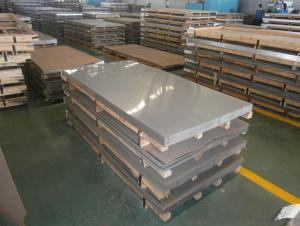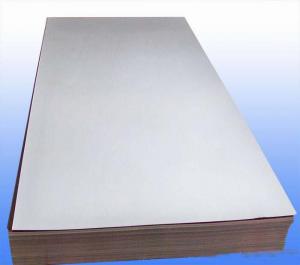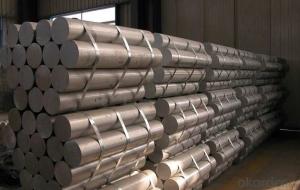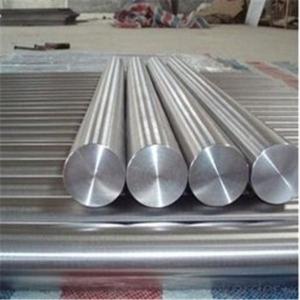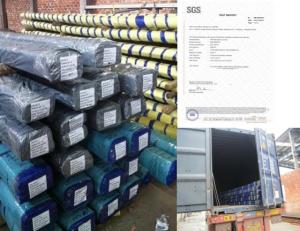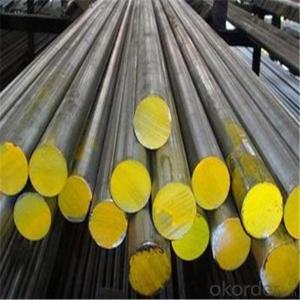304L 304 316 Stainless Steel Bar for Sale
- Loading Port:
- Shanghai
- Payment Terms:
- TT OR LC
- Min Order Qty:
- 5 m.t.
- Supply Capability:
- 25000 m.t./month
OKorder Service Pledge
OKorder Financial Service
You Might Also Like
Specification
Product name: 316 stainless steel round polished bar
Name | 316 stainless steel round polished bar |
Standard | AISI, ASTM, JIS,GB,EN,DIN |
Grade | 201/304/316/304L/316L |
Technology | Hot Drawn and Cold Drawn |
Form | Round/Square/Hexagonal Bar |
Diameter | 0.3 mm – 100mm |
| Length | Customized |
The sizes or thickness of stainless steel Bar can be customized. Our customer service staffs are available 7/24. | |
Chemical Composition (%)< stainless steel bar >
Type | C | Si | Mn | P | S | Ni | Cr | Mo |
201 | ≤0.15 | ≤0.75 | 5.5-7.5 | ≤0.06 | ≤0.03 | 3.5-5.5 | 13.5-15.0 | |
202 | ≤0.15 | ≤1.0 | 7.5-10.0 | ≤0.06 | ≤0.03 | 4.0-6.0 | 17.0-19.0 | |
304 | ≤0.08 | ≤1.00 | ≤2 | ≤0.035 | ≤0.030 | 10.0~14.0 | 18.0-20.0 | |
304L | ≤0.03 | ≤1.00 | ≤2 | ≤0.035 | ≤0.030 | 8.0~11.0 | 18.0-20.0 | |
316 | ≤0.08 | ≤1.00 | ≤2 | ≤0.035 | ≤0.030 | 10.0~14.0 | 16.0~18.5 | 2.0-3.0 |
316L | ≤0.03 | ≤0.75 | ≤2 | ≤0.045 | ≤0.030 | 10.0~14.0 | 16.0~18.5 | 2.0-3.0 |
Advantages of 316 stainless steel round polished bar
A : Elegance Surface and Diversity Usage
B : Corrosion Resistance and Longer Srevice Life
C :Heat Resistance
D: High Strength
F :High Strength of Oxidation Resistance
G: High Plasticity
H: Easy Surface Treatment
I : Hygiene and High Degree of Finish
J: Excellent Welding Performance
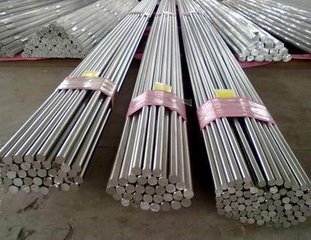

Our experience in developing and pioneering specialized stainless steel fabrications for our customers has made us solidly proficient at prototyping and design.
Because we specialize in multiple industries and reap manufacturing expertise,
we will be able to make your custom parts in the most cost-efficient manner.
Additionally, we have launched our own product line.
We are always open to new challenges and we are constantly working to increase our stainless steel fabricating skills and thereby reduce your costs as well as ours.
Stainless steel manufacturing is an art and a science;
it's a science because we relentlessly seek efficiency
It's an art because we expect and respect your particular needs.
Call us!
We want for your inquiry.
Technological Process of 316 stainless steel round polished bar

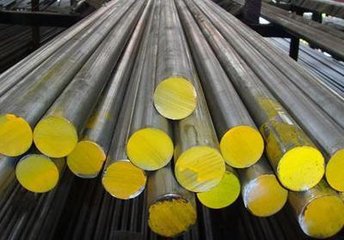
Quality Speaks Volumes
Boro has developed and produced premium stainless steel fabrications for over five hundred manufacturing, military, and general industrial companies.
We've run thousands of jobs and thousands of part designs.
We have outstanding deliverability and are ISO BV SGS registered .
So you know you're getting a quality product.
Our experience with reducing costs for our customers through long-run jobs is proven and reliable.
With many long term customers, our stainless steel fabrication services
are low cost and high quality in this present world marketplace.
Boro pursues improvement in every department. Roughly one tenth of company revenue is spent on new technology, renovations, improvements, & strategic market preparation.
Our entire business model (prospect to job close) has been completely value streamed and most of our workflow is strictly managed & controlled.
We maintain records and backups of all pertinent job data.
Company Information
China National Building Materials Group Corporation (CNBM) was established in 1984 with approval of the State Council, and then became a Central Enterprise under direct supervision of State-owned Assets Supervision and Administration Commission of the State Council in 2003. It is in charge of the administrative affairs in China building materials industry. By the end of 2013, CNBM’s total assets exceeded RMB 360 billion, with over 130,000 employees, and 20 companies under direct management with 100% share control or majority control, among which 6 were listed companies, including 2 oversea listed. On July 7th, 2014, CNBM with revenue USD 41028 million, was ranked 267th on the ”World Top 500 Enterprises” by Fortune Magazine.
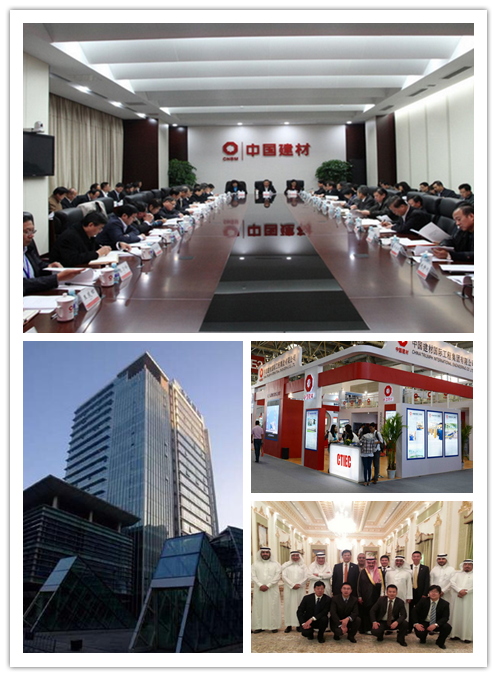
PACK & DELIVERY
Packaging & Delivery
1, Packaging: seaworthy package or as required
2, Delivery: 35-45 days or based on quantity
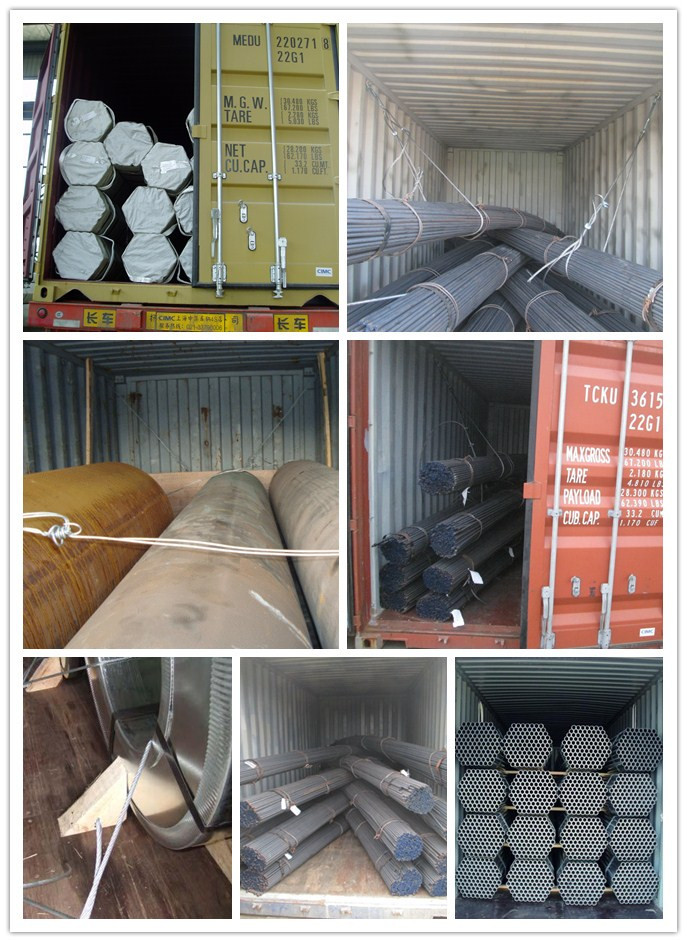
Application
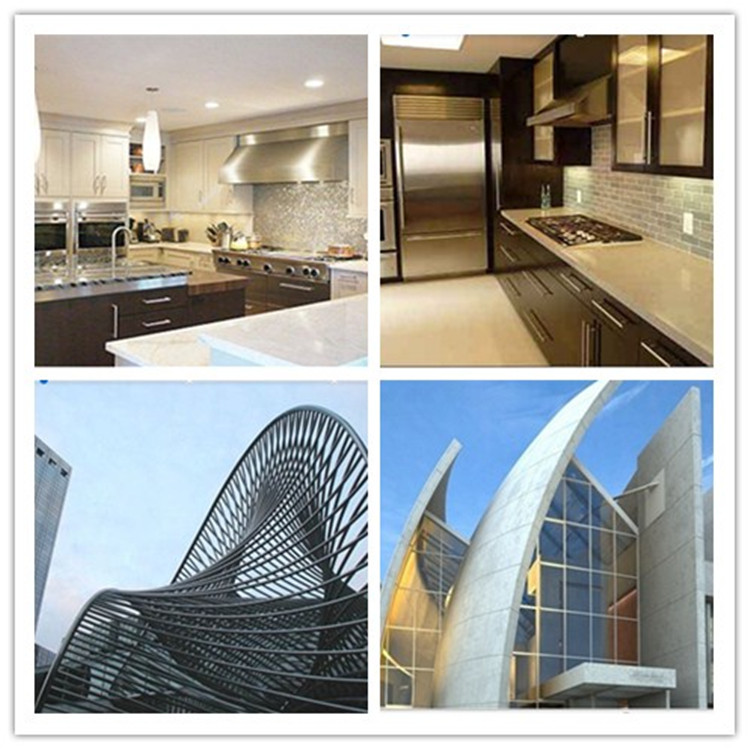
F A Q
FAQ
1, Your advantages?
professional products inquiry, products knowledge train (for agents), smooth goods delivery, excellent customer solution proposale
2, Test & Certificate?
SGS test is available, customer inspection before shipping is welcome, third party inspection is no problem
3, Factory or Trading Company?
CNBM is a trading company but we have so many protocol factories and CNBM works as a trading department of these factories. Also CNBM is the holding company of many factories.
4, Payment Terms?
30% TT as deposit and 70% before delivery.
Irrevocable L/C at sight.
5, Trading Terms?
EXW, FOB, CIF, FFR, CNF
6, After-sale Service?
CNBM provides the services and support you need for every step of our cooperation. We're the business partner you can trust.
For any problem, please kindly contact us at any your convenient time.
We'll reply you in our first priority within 24 hours.
- Q: What is the difference between stainless steel bars and stainless steel squares?
- The main difference between stainless steel bars and stainless steel squares lies in their shape and dimensions. Stainless steel bars are long, cylindrical-shaped pieces of stainless steel, typically with a round or square cross-section. They are commonly used for structural purposes, such as in construction, manufacturing, and machine building. Stainless steel squares, on the other hand, are square-shaped pieces of stainless steel with equal sides. They are often utilized for architectural applications, such as decorative accents, furniture, or ornamental projects. Both stainless steel bars and squares share the same material composition, which is stainless steel, known for its corrosion resistance, durability, and aesthetic appeal. However, their different shapes and sizes make them suitable for various applications in different industries.
- Q: Do stainless steel bars require any special storage conditions?
- Yes, stainless steel bars require special storage conditions to maintain their quality. They should be stored in a dry and well-ventilated area to prevent moisture accumulation and corrosion. Additionally, they should be kept away from direct contact with other metals to avoid galvanic corrosion. Proper labeling and organization are also essential to prevent damage and facilitate easy identification when needed.
- Q: Can stainless steel bars be used in the manufacturing of heat exchangers?
- Yes, stainless steel bars can be used in the manufacturing of heat exchangers. Stainless steel is a popular material for heat exchangers due to its high corrosion resistance, strength, and ability to withstand high temperatures. Stainless steel bars can be fabricated into various shapes and sizes, making them suitable for constructing heat exchanger components such as tubes, plates, and fins.
- Q: Are stainless steel bars suitable for pharmaceutical applications?
- Indeed, stainless steel bars prove to be suitable for pharmaceutical applications. Given their exceptional corrosion resistance, durability, and hygienic properties, stainless steel has gained popularity within the pharmaceutical industry. Specifically, these bars find extensive use in fabricating essential equipment such as tanks, vessels, and pipework that inevitably come into contact with pharmaceutical products. Moreover, stainless steel bars offer the advantage of being easily cleanable, maintainable, and sterilizable, making them highly suitable for environments with strict cleanliness requirements. Furthermore, stainless steel exhibits non-reactivity and does not compromise the chemical composition of pharmaceutical products, thereby ensuring the utmost integrity and safety of the products. In summary, stainless steel bars serve as a dependable and pragmatic choice for pharmaceutical applications.
- Q: What is the corrosion resistance of stainless steel bars in alkaline environments?
- In alkaline environments, stainless steel bars excel in resisting corrosion due to their inherent composition. The chromium content in stainless steel creates a protective oxide layer called chromium oxide, acting as a shield against alkaline substances and reducing the risk of corrosion. Moreover, the corrosion resistance of stainless steel in alkaline environments is further enhanced by the inclusion of other alloying elements like nickel and molybdenum. These elements contribute to the formation of a stronger and more durable oxide layer, offering enhanced protection against corrosion. Alkaline environments, which have a high pH level, encompass various applications such as water treatment plants, chemical processing facilities, and concrete structures. Stainless steel bars are commonly utilized in these settings due to their ability to withstand the corrosive nature of alkaline substances. It is crucial to consider that the corrosion resistance of stainless steel may vary depending on the specific grade and surface condition of the bars. Therefore, selecting the appropriate stainless steel grade and ensuring a proper surface finish are essential factors in guaranteeing optimal corrosion resistance in alkaline environments. In summary, stainless steel bars demonstrate outstanding corrosion resistance in alkaline environments. The passive oxide layer formed on the surface of stainless steel, along with the presence of alloying elements, offers effective protection against corrosion in applications where exposure to alkaline substances is a concern.
- Q: Are stainless steel bars suitable for hydroelectric power plants?
- Indeed, hydroelectric power plants find stainless steel bars to be a suitable choice. Stainless steel, being an exceptionally resilient and corrosion-resistant substance, proves to be the perfect fit for environments with continuous water exposure, like hydroelectric power plants. Moreover, stainless steel bars provide outstanding strength and structural integrity, guaranteeing the safety and long-lasting functionality of the power plant infrastructure. The corrosion resistance feature further aids in reducing maintenance and repair expenses, rendering stainless steel bars a cost-efficient option for hydroelectric power plant construction and upkeep.
- Q: What are the different types of stainless steel bar surface treatments for improved cleanability?
- There are several types of stainless steel bar surface treatments that can improve cleanability, including mechanical polishing, electropolishing, passivation, and chemical treatments. Mechanical polishing involves using abrasive materials to remove surface imperfections and create a smooth finish. Electropolishing uses an electrolytic process to remove a thin layer of metal and create a clean, shiny surface. Passivation involves treating the stainless steel with an acid solution to remove contaminants and promote the formation of a passive oxide layer, which enhances corrosion resistance and cleanability. Finally, chemical treatments can be applied to remove stubborn stains or contaminants from the stainless steel surface.
- Q: What is the difference between centerless ground and peeled stainless steel bars?
- The main difference between centerless ground and peeled stainless steel bars lies in the manufacturing process. Centerless ground bars are produced by grinding the surface of the stainless steel bar to achieve precise dimensions and a smooth finish. This process removes any imperfections and ensures tight tolerances. On the other hand, peeled stainless steel bars are created by removing the outer layer of the stainless steel bar through a peeling process. This results in a smooth, clean surface while retaining the original size of the bar. Overall, centerless ground bars are more suitable for applications that require precise dimensions, while peeled bars are preferred when a smooth surface finish is the main requirement.
- Q: What is the weight of a standard stainless steel bar?
- The weight of a standard stainless steel bar may change based on its size and quality. Nevertheless, a frequently employed standard stainless steel bar like ASTM A276/A479 Type 304 or 316 generally possesses a density of approximately 7.93 grams per cubic centimeter (g/cm³) or 7930 kilograms per cubic meter (kg/m³). To determine the weight of the bar, it is necessary to possess the measurements of its length, width, and height. This will enable the calculation of its volume, which can then be multiplied by the aforementioned density.
- Q: What is the difference between stainless steel bars and carbon steel bars?
- Stainless steel bars and carbon steel bars are two distinct types of steel materials with different properties and characteristics. The main difference between stainless steel bars and carbon steel bars lies in their composition and resistance to corrosion. Stainless steel bars are primarily made from iron, chromium, and other elements such as nickel and manganese. This composition gives stainless steel bars their corrosion-resistant properties, making them suitable for applications in environments where moisture, chemicals, and corrosive substances are present. Unlike carbon steel, stainless steel bars do not readily rust or stain, making them ideal for use in industries such as food processing, pharmaceuticals, and marine applications. On the other hand, carbon steel bars are mainly composed of iron and carbon. Carbon steel bars are generally stronger and more durable than stainless steel bars due to their higher carbon content. They have excellent tensile strength, hardness, and toughness, making them suitable for applications that require high strength and resistance to wear and tear, such as construction, automotive, and machinery industries. However, carbon steel bars are more susceptible to rust and corrosion compared to stainless steel bars, especially in humid or corrosive environments. In terms of cost, carbon steel bars are generally more affordable compared to stainless steel bars, primarily due to the difference in their composition and availability. However, the specific price difference may vary depending on factors such as market demand, production costs, and quality. In summary, the key difference between stainless steel bars and carbon steel bars lies in their composition, corrosion resistance, and strength. Stainless steel bars are corrosion-resistant and ideal for applications in moisture-rich or corrosive environments, while carbon steel bars are stronger and more durable but require protection against rust and corrosion. The choice between the two types of bars depends on the specific requirements of the application and the desired properties of the material.
Send your message to us
304L 304 316 Stainless Steel Bar for Sale
- Loading Port:
- Shanghai
- Payment Terms:
- TT OR LC
- Min Order Qty:
- 5 m.t.
- Supply Capability:
- 25000 m.t./month
OKorder Service Pledge
OKorder Financial Service
Similar products
Hot products
Hot Searches
Related keywords
